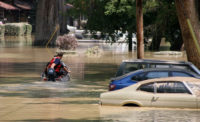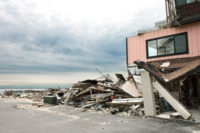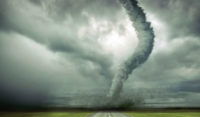How Hurricane Sandy Affected the Unprepared






Say a prayer for Joclyn and Jeffrey Bard of Huntington, Long Island. They suffered through the ravages of Superstorm Sandy, as had millions of businesses and households in the northeast U.S. Licking their wounds, the Bards in mid-November filed a lawsuit seeking class-action status before the New York State Supreme Court. They want damages from Cablevision for lost service, saying the cable company should be offering automatic credits to customers.
Disaster recovery continues into the New Year.
Hurricane turned Superstorm Sandy devastated portions of the Caribbean, the Mid-Atlantic and Northeastern United States, and Eastern Canada in late October. While only a category 1 storm, it became the largest Atlantic hurricane on record as measured by diameter with winds spanning 1,100 miles. Sandy is estimated to have caused damage of at least $20 billion with losses from business interruption at more than $50 billion. At least 199 people were killed along the path of the storm in seven countries.
Retail sales fell as American consumers pulled back after a three-month shopping spree when Superstorm Sandy slammed into the East Coast, shutting malls and auto showrooms.
There has been a lot of after-the-fact, of course.
Marsh USA, the insurance broker and risk adviser, has an informative webinar on the topic. “Commercial insured losses from Sandy will be substantial, especially among the public sector and service and transportation industries,” says Duncan Ellis, U.S. property practice leader for Marsh. “Although physical property damage is extensive, an equal or perhaps larger amount of the losses will likely come from business interruption, extra expense and contingent business interruption claims as a result of the widespread flooding, power outages, and ingress and egress issues.”
Ellis believes it may still be too early to say what impact the storm will have on the U.S. insurance market. “Property rates had been trending up following the record catastrophe losses in 2011, but those increases all but flattened out by the third quarter of 2012. Underwriters may attempt to tighten up terms and conditions and raise rates on risks in the Northeast, but there is still plenty of capacity in the market.”
There is also disaster preparedness.
One of the biggest lessons from Sandy – don’t place your backup generators in the building basement. There are scores of other specific strategies. Check www.securitymagazine.com and use the keywords “disaster preparedness.” It is also obvious that infrastructure that enterprises depend on – electricity and telecommunications – are critically essential.
This article was previously published in the print edition as "Superstorm Sandy and the Unprepared."
Looking for a reprint of this article?
From high-res PDFs to custom plaques, order your copy today!









